Ellora Caves - Cave 16 of the Kailasanatha Temple
Ellora Caves - Cave 16 of the Kailasanatha Temple
Ellora is a UNESCO World Heritage Site located in the Aurangabad district of Maharashtra, India. It is one of the largest rock-cut monastery-temple cave complexes in the world, featuring Hindu, Buddhist and Jain monuments, and artwork, dating from the 600–1000 CE period.Cave 16, in particular, features the largest single monolithic rock excavation in the world, the Kailasha temple, a chariot shaped monument dedicated to Lord Shiva. The Kailasha temple excavation also features sculptures depicting the gods, goddesses and mythologies found in Vaishnavism, Shaktism as well as relief panels summarizing the two major Hindu Epics.There are over 100 caves at the site, all excavated from the basalt cliffs in the Charanandri Hills, 34 of which are open to public. These consist of 12 Buddhist (caves 1–12), 17 Hindu (caves 13–29) and 5 Jain (caves 30–34) caves, each group representing deities and mythologies prevalent in the 1st millennium CE, as well as monasteries of each respective religion. They were built close to one another and illustrate the religious harmony that existed in ancient India. All of the Ellora monuments were built during the Rashtrakuta dynasty, which constructed part of the Hindu and Buddhist caves, and the Yadava dynasty, which constructed a number of the Jain caves. Funding for the construction of the monuments was provided by royals, traders and the wealthy of the region. Although the caves served as monasteries, temples and a rest stop for pilgrims. the site's location on an ancient South Asian trade route also made it an important commercial centre in the Deccan region.[10] It is 29 kilometres (18 miles) north-west of Aurangabad, and about 300 kilometres (190 miles) east-northeast of Mumbai. Today, the Ellora Caves, along with the nearby Ajanta Caves, are a major tourist attraction in the Marathwada region of Maharashtra and a protected monument under the Archaeological Survey of India.
Etymology
Ellora, also called Verul or Elura, is the short form of the ancient name Elapura. The older form of the name has been found in ancient references such as the Baroda inscription of 812 CE which mentions "the greatness of this edifice" and that "this great edifice was built on a hill by Krishnaraja at Elapura, the edifice in the inscription being the Kailasa temple (Cave 16). In the Indian tradition, each cave is named and has a suffix Guha (Sanskrit), Lena or Leni (Marathi), meaning cave.
Location
The Ellora caves are situated in state of Maharashtra about 29 kilometres (18 miles) northwest of the city of Aurangabad, 300 kilometres (190 miles) east-northeast of Mumbai, 235 kilometres (146 miles) from Pune and about 100 kilometres (62 miles) west of the Ajanta Caves, 2.3 kilometres (1.42 miles) from Grishneshwar Temple (India).
Ellora occupies a relatively flat rocky region of the Western Ghats, where ancient volcanic activity had created multilayered basalt formations, known as the Deccan Traps. The volcanic activity that formed the west-facing cliff that houses the Ellora caves occurred during the Cretaceous period. The resulting vertical face made access to many layers of rock formations easier, enabling architects to pick basalt with finer grains for more detailed sculpting.
Chronology
The construction at Ellora has been studied since British colonial rule. However, the overlapping styles between the Buddhist, Hindu and Jaina caves has made it difficult to establish agreement concerning the chronology of their construction. The disputes generally concern: one, whether the Buddhist or Hindu caves were carved first and, two, the relative dating of caves within a particular tradition. The broad consensus that has emerged is based on comparing the carving styles at Ellora to other cave temples in the Deccan region that have been dated, textual records of various dynasties, and epigraphical evidence found at various archaeological sites near Ellora and elsewhere in Maharashtra, Madhya Pradesh and Karnataka. Geri Hockfield Malandra and other scholars have stated that the Ellora caves had three important building periods: an early Hindu period (~550 to 600 CE), a Buddhist phase (~600 to 730 CE) and a later Hindu and Jain phase (~730 to 950 CE).
The earliest caves may have been built during the Traikutakas and Vakataka dynasties, the latter being known for sponsoring the Ajanta caves. However, it is considered likely that some of the earliest caves, such as Cave 29 (Hindu), were built by the Shiva-inspired Kalachuri dynasty, while the Buddhist caves were built by the Chalukya dynasty. The later Hindu caves and early Jaina caves were built by the Rashtrakuta dynasty, while the last Jaina caves were built by the Yadava dynasty, which had also sponsored other Jaina cave temples.
The Kailāśa temple: Cave 16
Main article: Kailasa temple, Ellora
Kailash temple at Ellora. Right: James Fergusson's 19th-century drawing of the temple Cave 16, known as the Kailasa temple, is a particularly notable cave temple in India as a result of its size, architecture and having been entirely carved out of a single rock.
The Kailasha temple, inspired by Mount Kailasha, is dedicated to Shiva. It is modeled along similar lines to other Hindu temples with a gateway, an assembly hall, a multi-storey main temple surrounded by numerous shrines laid out according to the square principle, an integrated space for circumambulation, a garbha-grihya (sanctum sanctorum) wherein resides the linga-yoni, and a spire-shaped like Mount Kailash – all carved from one rock. Other shrines carved from the same rock are dedicated to Ganga, Yamuna, Saraswati, the ten avatars of Vishnu, Vedic gods and goddesses including Indra, Agni, Vayu, Surya and Usha, as well as non-Vedic deities like Ganesha, Ardhanarishvara (half Shiva, half Parvati), Harihara (half Shiva, half Vishnu), Annapurna, Durga and others. The basement level of the temple features numerous Shaiva, Vaishnava and Shakti works; a notable set of carvings include the twelve episodes from the childhood of Krishna, an important element of Vaishnavism.
Kailasanatha temple, remarkably carved out of one single rock was built by Rashtrakuta king Krishna I (r. 756–773 CE)
The Ramayana panel
The structure is a freestanding, multi-level temple complex covering an area twice the size of the Parthenon in Athens. It is estimated that the artists removed three million cubic feet of stone, weighing approximately 200,000 tonnes, to excavate the temple.
The construction of the temple has been attributed to the Rashtrakuta king Krishna I (r. 756–773 CE), but elements of Pallava architecture have also been noted. The dimensions of the courtyard are 82 meters by 46 meters at the base, and 30 meters high (280 × 160 × 106 feet). The entrance features a low gopuram. The central shrine housing the lingam features a flat-roofed mandapa supported by 16 pillars, and a Dravidian shikhara. An image of Shiva's mount Nandi (the sacred bull) stands on a porch in front of the temple. Two of the walls in the main temple house rows of carvings depicting the Mahabharata, along the north side, and the Ramayana, on the south side.
The Kailasha temple is considered a highly notable example of temple construction from 1st millennium Indian history, and was called, by Carmel Berkson, "a wonder of the world" among rock-cut monuments.
I have taken the information from Wikipedia, sharing the link with you guys for better knowledge. https://en.wikipedia.org/wiki/Ellora_Caves. So the information credit goes to Wikipedia.
I have personally visited the place and the pictures uploaded are from last visit, i would like to recommend the place for adventure and heritage lovers.
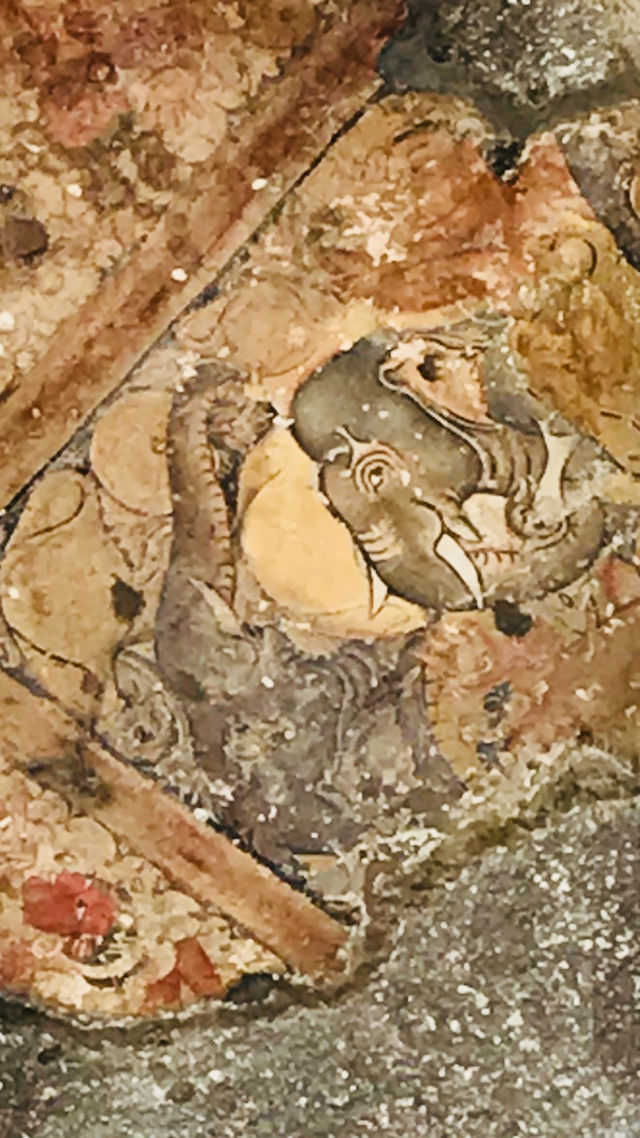
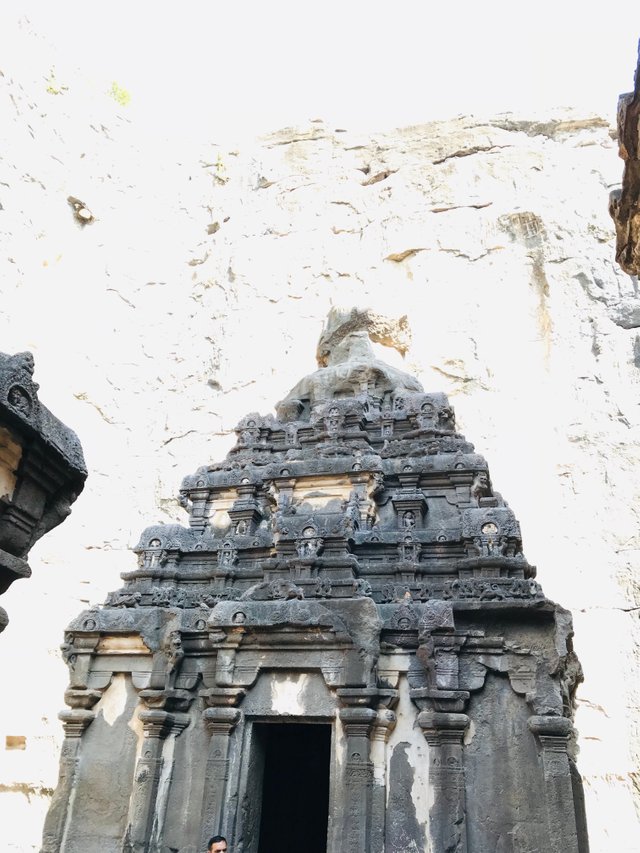
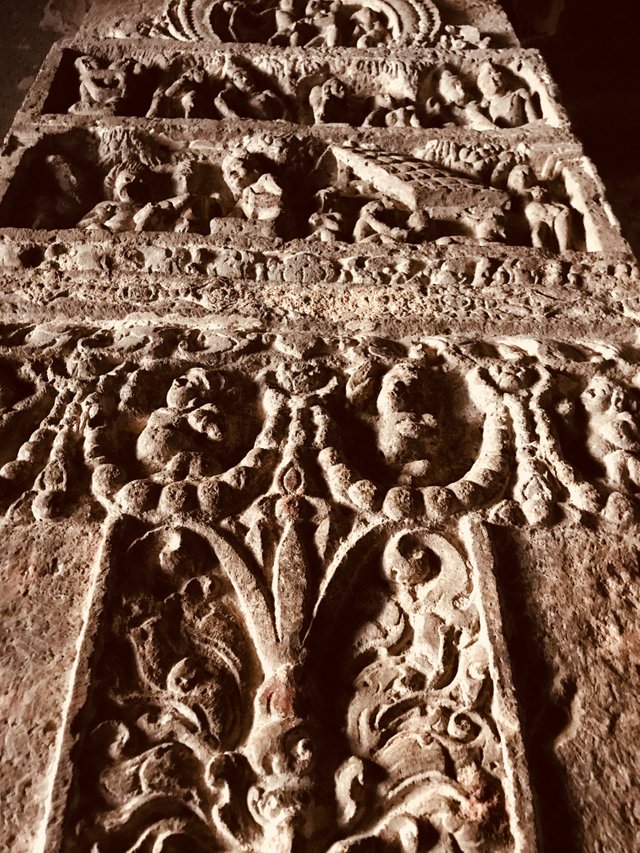
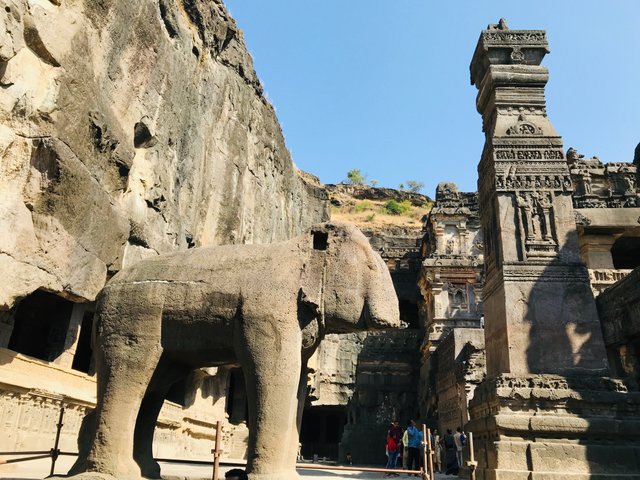
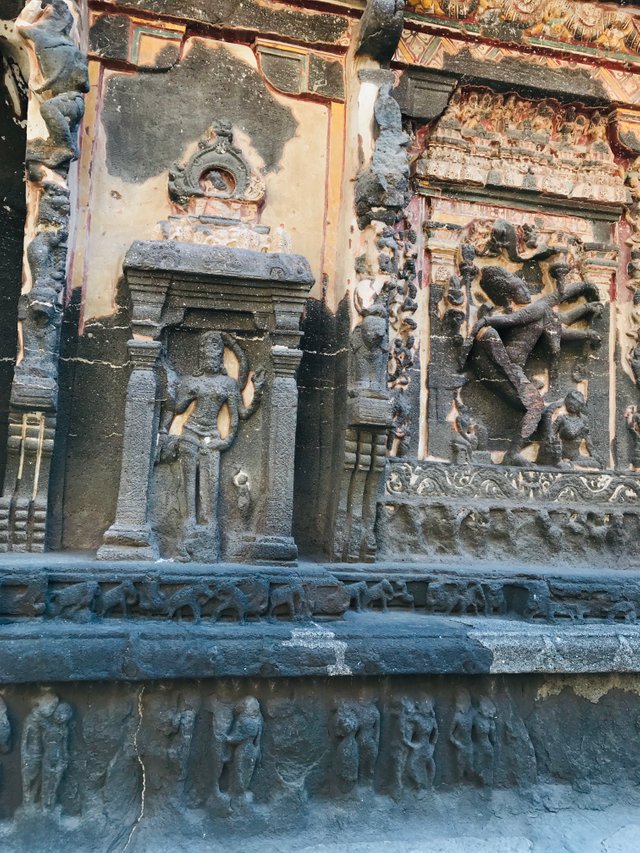
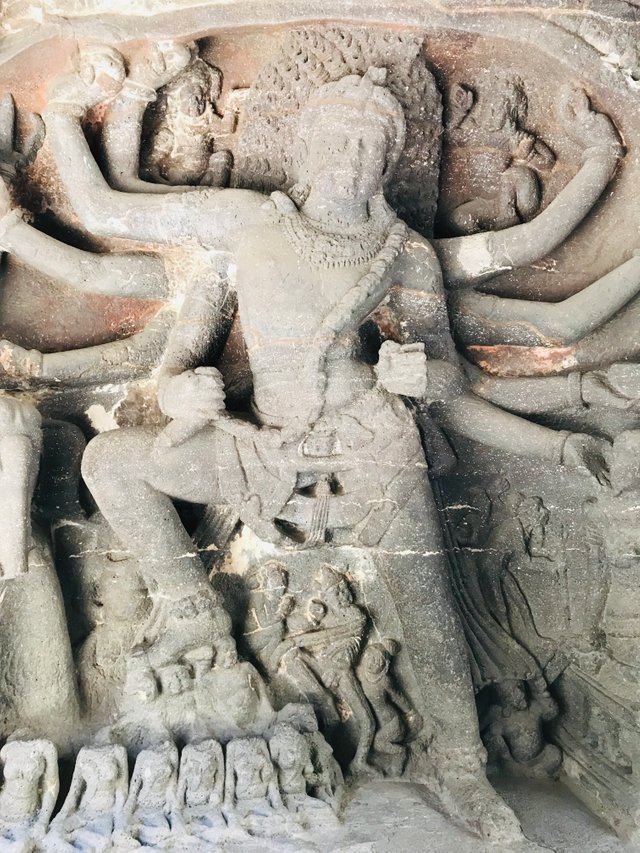
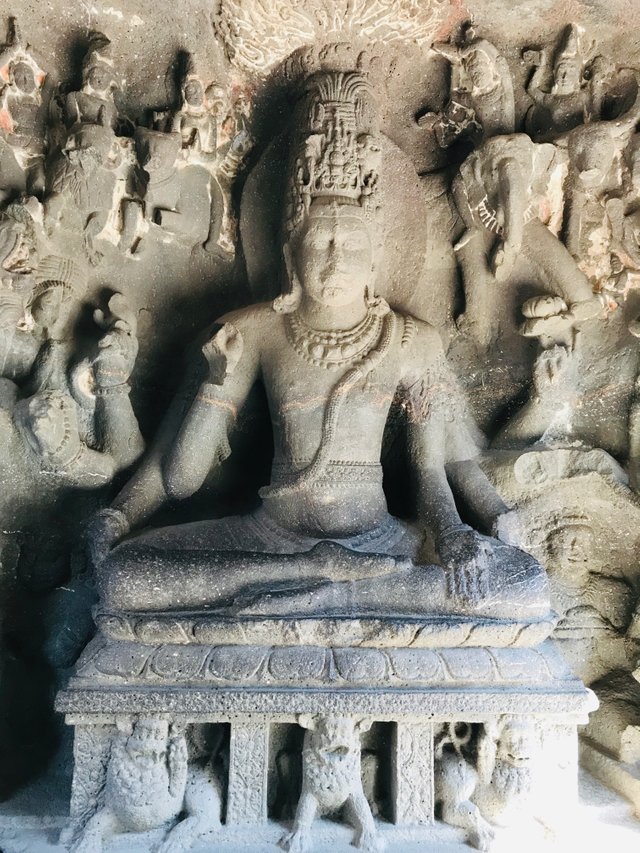
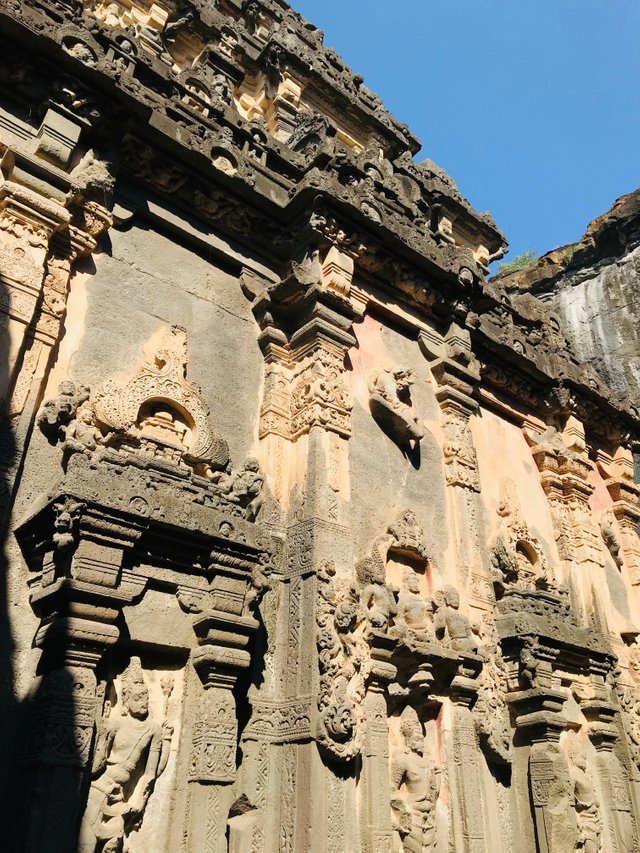
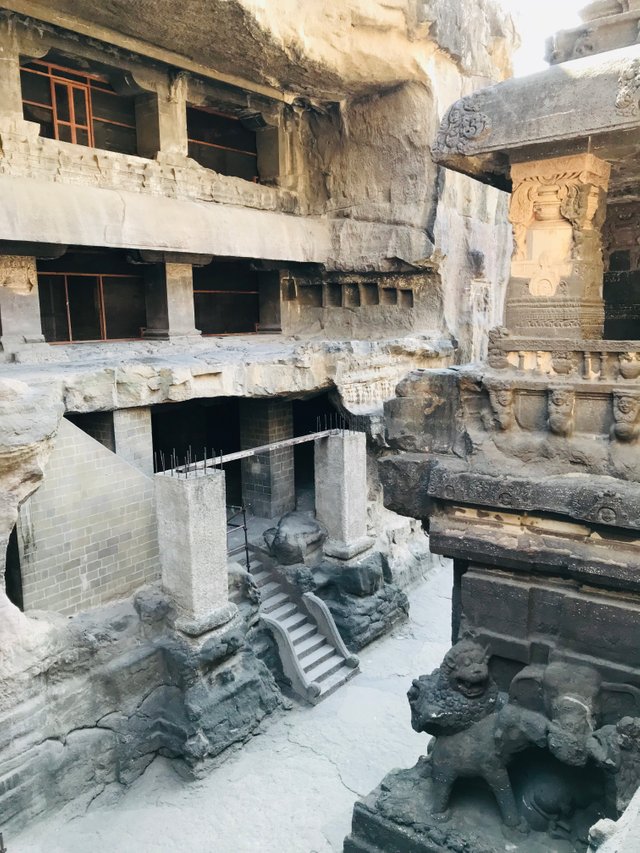
It's better if you share your personal experience in your posts. The purpose of your blog is to share information that's not found in any other place, nobody can talk of the visit as you. Great pictures!
Sure. I will try to give more information in my next post about the stepwell.. thanks for being their to guide me ans lots of new joiner like me... @leveuf